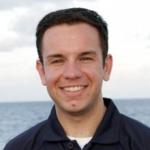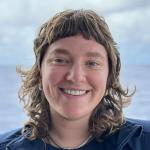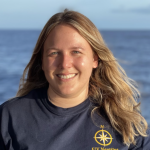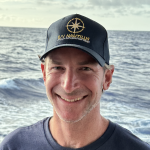The Republic of the Marshall Islands is an atoll-based country of over 1,200 islands surrounded by 2.13 million square kilometers of ocean, the vast majority of which has never been mapped or surveyed. Despite data gaps, it’s known that the deep sea of Aolepān Aorōkin Ṃajeḷ hosts rich and diverse marine resources, including over 300 unexplored seamounts, extensive deep-sea ridges and escarpments, and numerous historically significant underwater cultural heritage sites associated with World War II. This 21-day telepresence-enabled expedition will utilize the mapping, ROV, and telepresence systems of E/V Nautilus to collect critical ocean baseline information to support the Marshall Islands Marine Spatial Planning process, as well as long-standing collaborations between the U.S. and the Marshall Islands on protecting fisheries and the environment and strengthening regional security.
This expedition is funded by NOAA Ocean Exploration via the Ocean Exploration Cooperative Institute.



















































